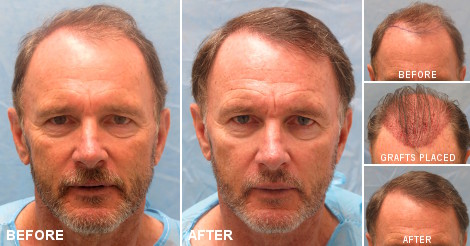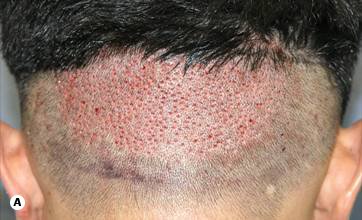Summary of “Trichophytic Closure of the Donor Area” which appeared in Hair Transplant Forum International July/August 2005 by Mario Marzola, MBBS Norwood Australia
When hair transplant surgeons meticulously close the edges of a donor wound, they generally end up with a fine, linear scar that is approximately 1-2mm in width. Sometimes, the scar can be a bit wider and every once in a while, when the person’s connective tissue is weak, or the edges of the scar are closed too roughly or have too much tension, the scar can be a cosmetic problem. The educated patient, who has expectations of a thin scar, or the patient who is likely to wear his hair very short, hopes that their hair transplant doctor can produce scars that are practically invisible.
A Trichophytic closure is a way of improving the linear donor scars of hair transplant patients. A Trichophytic incision in hair transplantation involves trimming off the upper edge of the incision and then closing the wound in such a way the hair near the edge can grow through the scar. This has the potential to produce a scar that is virtually undetectable.
To perform a comparison study, Dr. Marzola conducted a trial using 26 consecutive patients. Each hair transplant patient had one side of their scar closed trichophytically (i.e., with the top edge removed) and the other side closed with the edge left as is.









